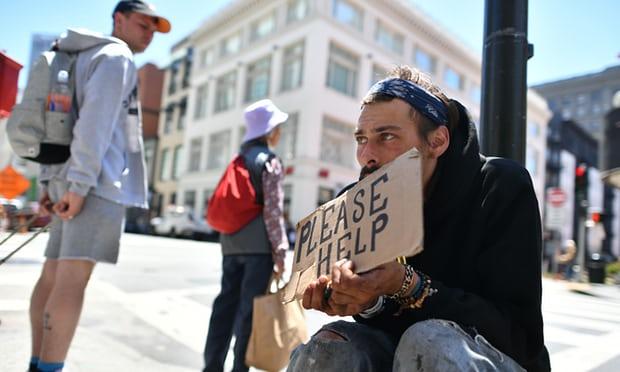America’s homeless population has risen this year for the first time since the Great Recession, propelled by the housing crisis afflicting the west coast, according to a new federal study, the guardian reports.
The study has found that 553,742 people were homeless on a single night this year, a 0.7% increase over last year. It suggests that despite a fizzy stock market and a burgeoning gross domestic product, the poorest Americans are still struggling to meet their most basic needs.
“The improved economy is a good thing, but it does put pressure on the rental market, which does put pressure on the poorest Angelenos,” said Peter Lynn, head of the Los Angeles homelessness agency. The most dramatic spike in the nation was in his region, where a record 55,000 people were counted. “Clearly we have an outsize effect on the national homelessness picture.”
The government mandates that cities and regions perform a homeless street count every two years, when volunteers fan out everywhere from frozen parks in Anchorage to palm-lined streets in Beverly Hills and enumerate people by hand. Those numbers are combined with the total staying in shelters and temporary housing. The tally is considered a crucial indicator of broad trends, but owing to the difficulties involved it is also widely regarded as an undercount.
“I’m surprised that [the numbers are] not going up faster than what that’s showing,” said John Parvensky, president of the Colorado Coalition for the Homeless.
There was an increase of 4.1% in New York. In the west, Seattle, Portland, San Diego, Sacramento and Oakland all reported surges of varying sizes. Most of the increase across the country is driven by people living in doorways, tents and RVs as opposed to in shelters. People of color are dramatically overrepresented: African Americans make up over one-third of the number.
In one sense the prevalence of homelessness seems odd, because the national poverty rate has fallen to around the same level as before the recession. Yet homelessness is linked to economic growth. In some of the nation’s more desirable major cities, housing is rapidly appreciating to a point where it is out of reach for lower earners.
Median hourly wages in the US have barely budged for decades, from $16.74 in 1973 to $17.86 in 2016, in terms of 2016 dollars, according to the Economic Policy Institute. But in New York, for instance, the hourly wage required to comfortably rent a one-bedroom is $27.29. In Los Angeles, it is $22.98.






